Although they look like lizards the tuatara (Sphenodon punctatus) of New Zealand is in fact the last living member of the order Rhynchocephalia and not a lizard at all. This order of reptiles, closely related to squamata (lizards, including snakes), had their heyday during the Mesozoic, getting their start in the mid-Triassic and achieving worldwide distribution during the Jurassic. They occupied many of the niches now occupied by lizards, including aquatic habitats. Most of them went extinct during the Cretaceous and the tuatara is the sole survivor.

Although listed as least concern the tuatara went extinct on mainland New Zealand before the arrival of Europeans and is now confined to numerous mammal-free offshore islands. Attempts to reintroduce the tuatara to the mainland are underway and in 2009 a tuatara hatchling was found on the mainland. Tuataras take 10-20 years to reach maturity and it takes 12-15 months for eggs to hatch, but they can also live 60-100 years.
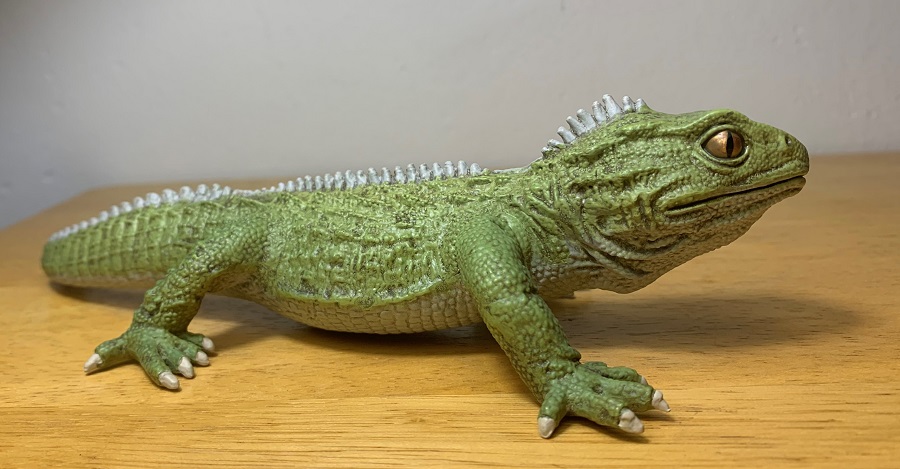
The tuatara is literally one of a kind and yet despite this, it is largely absent in plastic form. The few toys of it that do exist are either small, unremarkable, discontinued, or all the above. But not anymore. For 2023 Safari Ltd. has filled the tuatara shaped void in our collections and toyboxes.
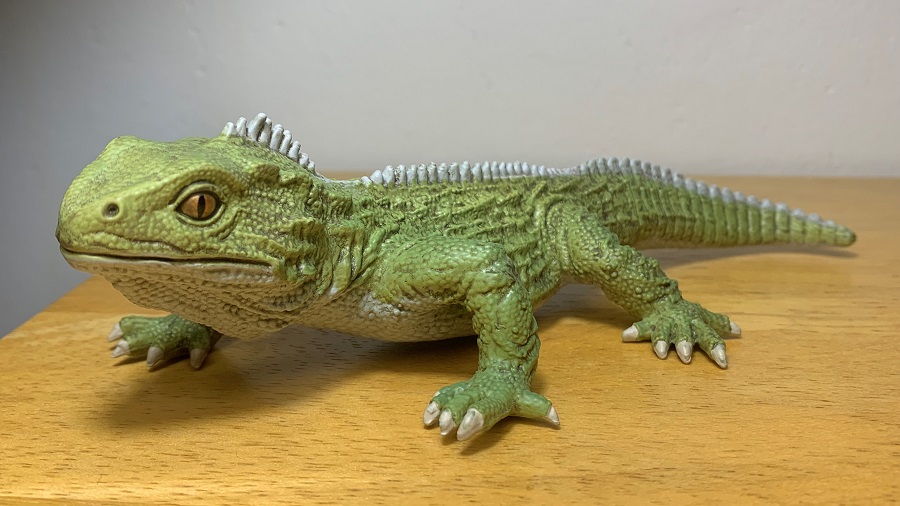
The Safari tuatara measures 8” (17.78 cm) along its curved tail while the actual tuatara, the largest reptile native to New Zealand, measures between 18-24” (45.72- 60.96 cm) with males being larger than females. This puts the Safari figure at about 1/3 in scale.
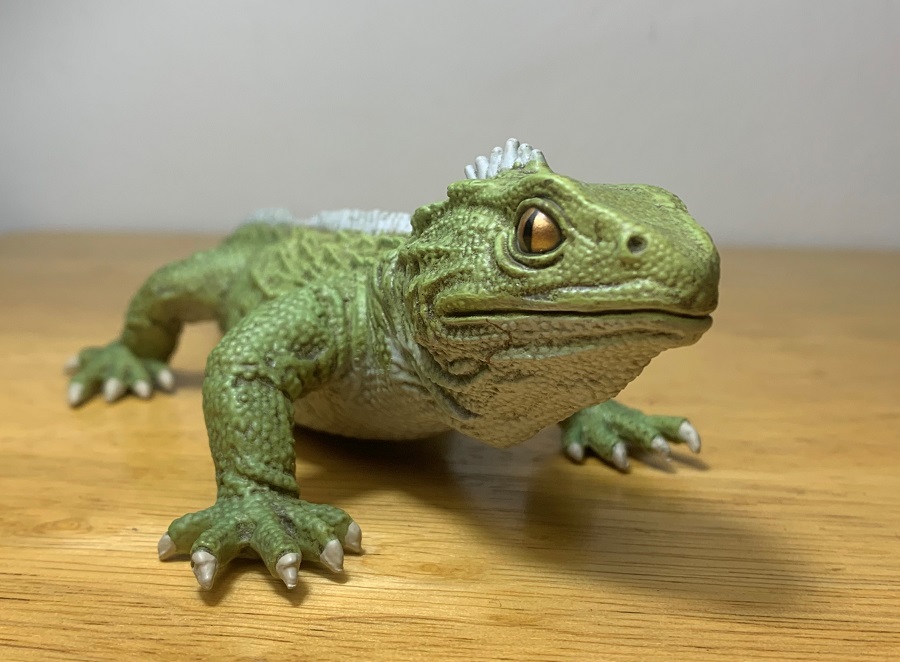
The figure is positioned in a static pose, as if it were basking out in the sun. But not for too long! Temperatures above 82 F (28 C) are fatal for the tuatara, it prefers temperatures between 61-70 F (16-21 C) and will remain active in temps as low as 41 F (5 C). This preference for lower temperatures than most reptiles help explain the tuatara’s slow growth and development, and long lifespan. Tuataras are typically nocturnal too, as indicated by the slit pupils of the Safari figure.
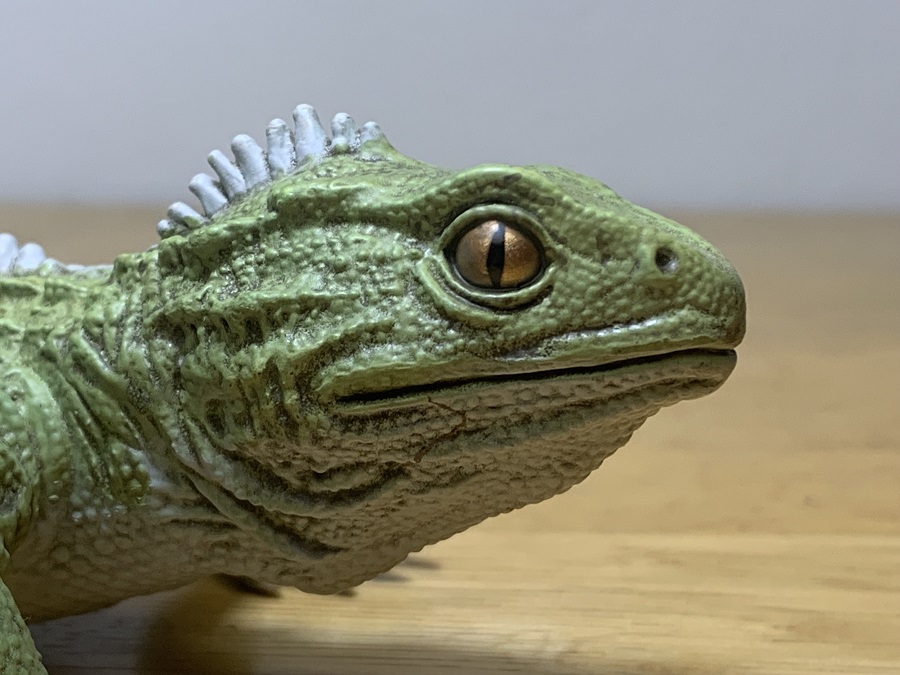
If you look closely at the large, frog-like head of the Safari figure you’ll notice that it displays a downward curved premaxilla, the bones at the top of the upper jaw. In life this is beak-like and separated from the rest of the jaw by a notch. This feature is more apparent on the right side of the figure. The mouth is closed so you cannot see the unique arrangement of the teeth which includes a single row of teeth in the lower jaw and two in the upper. Tuataras are mostly carnivorous, and their diet includes various invertebrates, reptiles, amphibians, birds, eggs, and even smaller tuatara.

A crest of spines runs down the back and these would be larger in males than in females. Skin elsewhere on the body is appropriately wrinkled and baggy, with fine scales, and thick ridges of skin along the flanks. The tail has plate-like scales like those on a crocodile and in life the tuatara can drop and regenerate a lost tail.
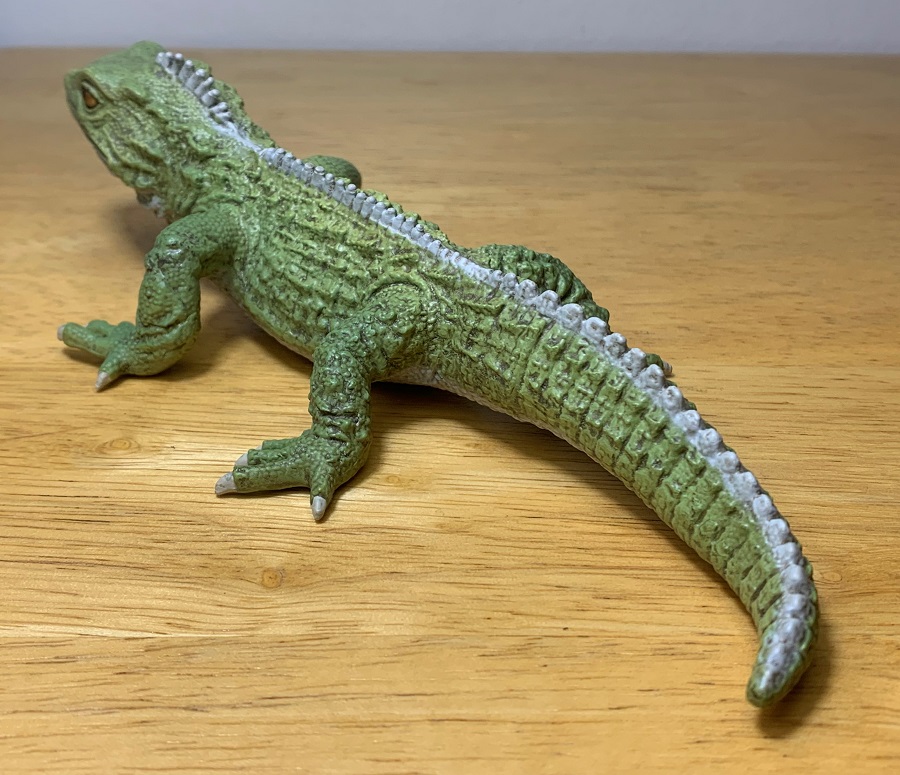
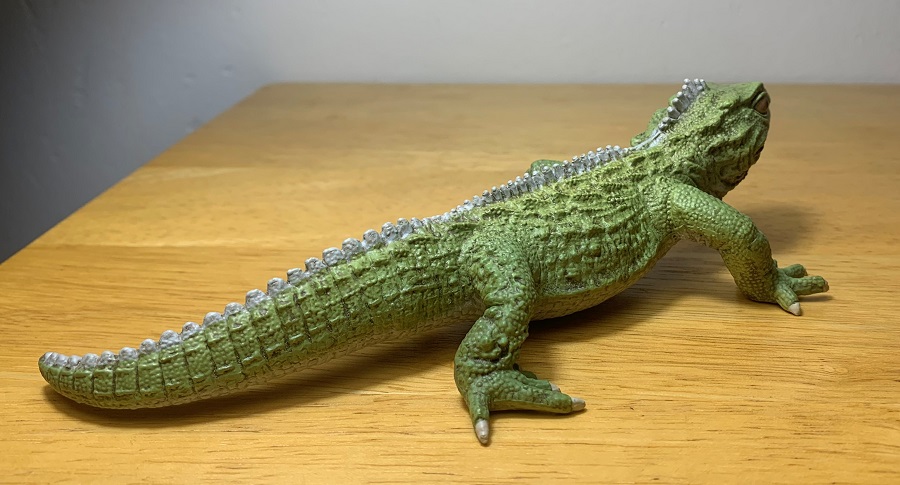
The build is overall stocky, robust, and visually similar to an agamid lizard, which is what the tuatara was originally classified as. The tail appears somewhat small but still looks to be within the range of individual variation. Unlike last year’s crested gecko there is no sculpted cloaca.

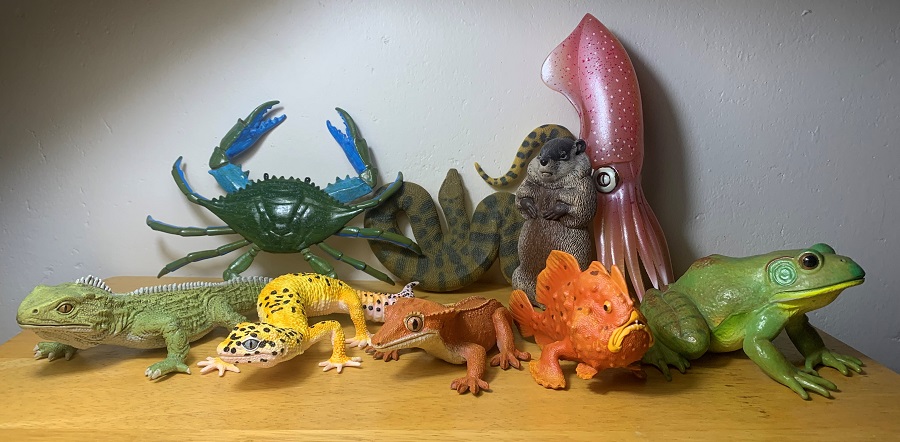
Tuatara come in a range of colors including olive green, brown, and orange-red. This coloration allows the tuatara to camouflage into the coastal forests and clearings it lives in. The tuatara’s habitat is generally cold, damp, and humid. They commonly live in burrows which they often share with seabirds.


This figure is mostly olive-green and grey with a grey belly. The nails and dorsal spines of the figures are also grey, and the eyes are copper colored with black pupils and a shiny, lifelike finish. The paint application is excellent overall.
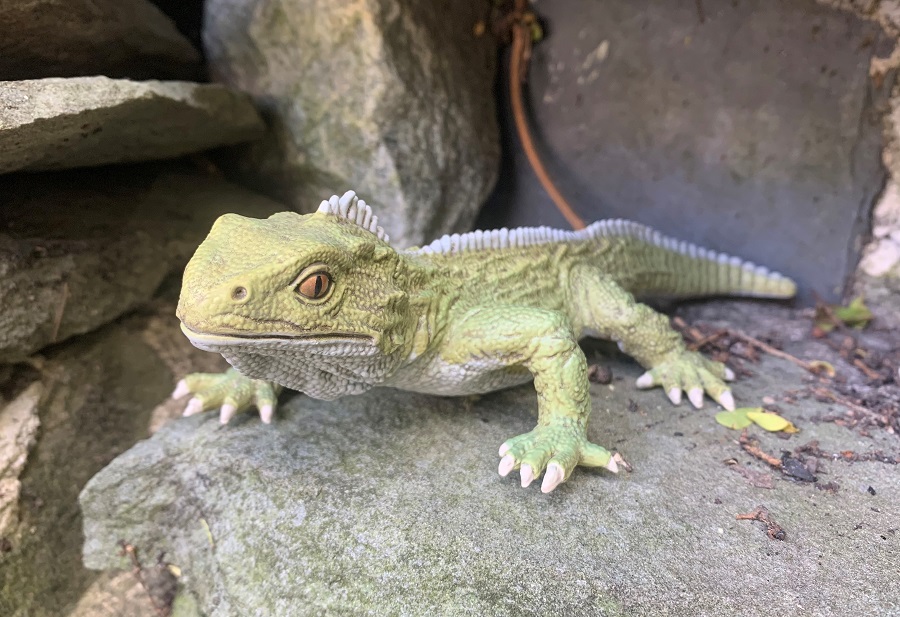

The Safari tuatara is a much welcomed and needed addition to their lineup. For years this species and the order it represents has largely been ignored in this hobby and it’s great to finally have a decent tuatara figure available. This figure should appeal to a wide range of demographics, including children and educators, collectors of unique and scientifically significant fauna, reptiles, or even prehistoric animals. For me, this figure is definitely one of the year’s best. The Safari tuatara is not yet available but will be on Safari’s website soon, it will retail for $14.99.
Lastly, I would like to extend my gratitude towards Safari Ltd. for kindly sending along this figure as a review sample.
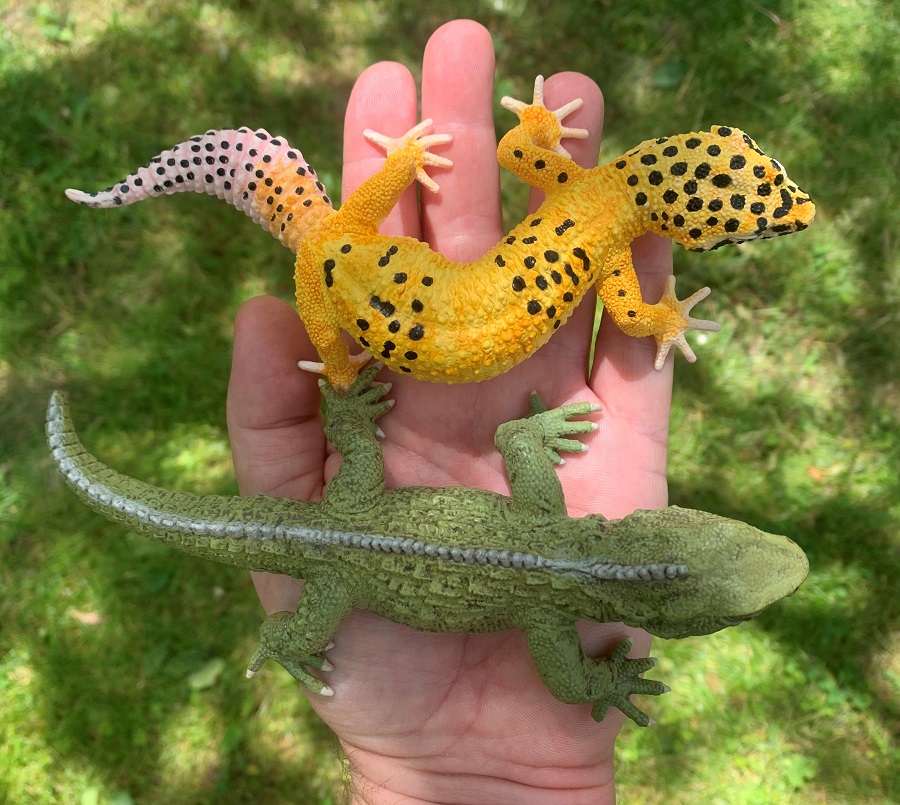

Disclaimer: links to Ebay and Amazon on the AnimalToyBlog are affiliate links, so we make a small commission if you use them. Thanks for supporting us!




I love it. This is a perfect species for the IC line, and overdue for representation from the big animal bands.
It’s really surprising that we haven’t gotten more tuatara in the past. Seems like something every toy company would have made at some point.
My only criticism is that brown would have made for a more familiar colour scheme, albeit a more boring one as well.
Strangely the Toob Tuatara is much more accurate in its proportions, as the IC has a very small body and the limb girdles are set much to high towards the spine.
That being said, I will obtain one nevertheless to customize it. Is it a hollow figure? Would make customizing much easier…
Unfortunately both are not availabe in Germany as of yet.